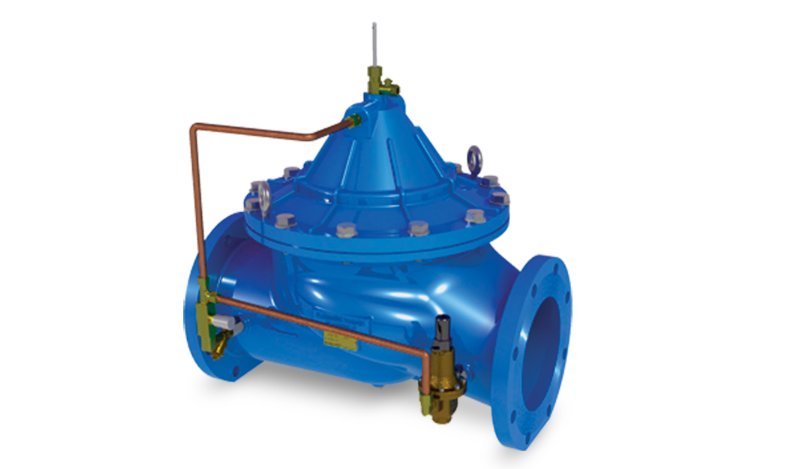Export Office: 21Floor, No.5 Nanhai Zhi Road,Qingdao, Shandong ,China
Work Shop: Beian Industrial zone, Qingdao,Shandong,China
+86 532 88550858
Martin
Inquiry now
The Purpose of Pressure Reducing Valves
Pressure Reducing Valves(PRVs) are devices that work with water systems. They lower high incoming pressure to a steady lower outgoing pressure. This happens no matter how demand changes or if incoming pressure varies. These valves are vital in city water systems, farm watering setups, and tall buildings. In city systems, PRVs are key at the start of pressure zones or District Metering Areas (DMAs).

In farm watering setups, PRVs are used at water headers. These are at the entry of lower fields or low-pressure systems like drip pipes. In tall buildings, these valves shield plumbing and low-rated fittings from high pressure.
A typical Pressure Reducing Valve has several main parts. These include a spring, diaphragm, and pilot mechanism. The spring and diaphragm work together. They control the size of the opening where water flows. This lets the valve adjust water flow based on incoming pressure levels.
The water system senses outgoing pressure through a pilot mechanism. When outgoing pressure goes above the set point, the pilot tells the valve to reduce or close. But when outgoing pressure falls below the set point, it opens the valve. This active adjustment keeps water flow steady. It also prevents damage from too much or too little pressure.
To adjust a Pressure Reducing Valve well, you need a few tools:
· A wrench that fits your valve’s adjustment nut or screw.
· A water pressure gauge.
· An air pump (for closed systems with thermal expansion tanks).
Make sure to turn off your home’s main water supply before adjusting. Wear protective gear if needed. Follow the maker’s guidelines for your specific valve model.
Attach a gauge downstream of the valve. For example, use a faucet or water heater drain. This measures current pressure levels accurately. This step is important to know how much adjustment is needed.
Step-by-Step Guide to Adjusting a Pressure Reducing Valve

The Pressure Reducing Valve is usually near your home’s main shutoff valve. Or it may be part of your water meter system. It often looks like a bell-shaped device with a gauge attached.
Most valves have an adjustment part like a nut, screw, or knob. Turning it clockwise usually raises pressure. Turning it counterclockwise lowers it.
Before adjusting, use your gauge to check current pressure levels. Aim for home pressures below 80 psi.
In closed systems, extra pressure cannot return to city lines. Ensure your thermal expansion tank matches the valve’s settings. Open systems let extra pressure flow back into supply lines.
Loosen the locking nut on your Pressure Reducing Valve. Turn the adjustment screw in small steps. Do not go more than ¼ turn at a time. Watch changes on your gauge.
For closed systems with thermal expansion tanks:
· Use an air gauge on the tank’s inlet valve.
· Add air with a hand pump until the tank’s pressure matches your adjusted PRV setting.
Tighten the locking nut firmly after adjusting. This prevents accidental changes. Remove all gauges used during testing.
If adjustments do not steady water pressure, replacement may be needed. Persistent leaks despite correct settings also suggest replacement.
FLUIDO provides a wide range of high-quality valves. Explore FLUIDO’s range of carefully designed PRVs for home use. Their new designs ensure steady performance in various conditions. They also protect appliances from high-pressure damage.Contact FLUIDO for customization service for your projects .
Export Office: 21Floor, No.5 Nanhai Zhi Road,Qingdao, Shandong ,China
Work Shop: Beian Industrial zone, Qingdao,Shandong,China
+86 532 88550858
Martin
© 2020 Qingdao Fluido Industrial Co.,Ltd. All Rights Reserved. Qingdao fluido valve

